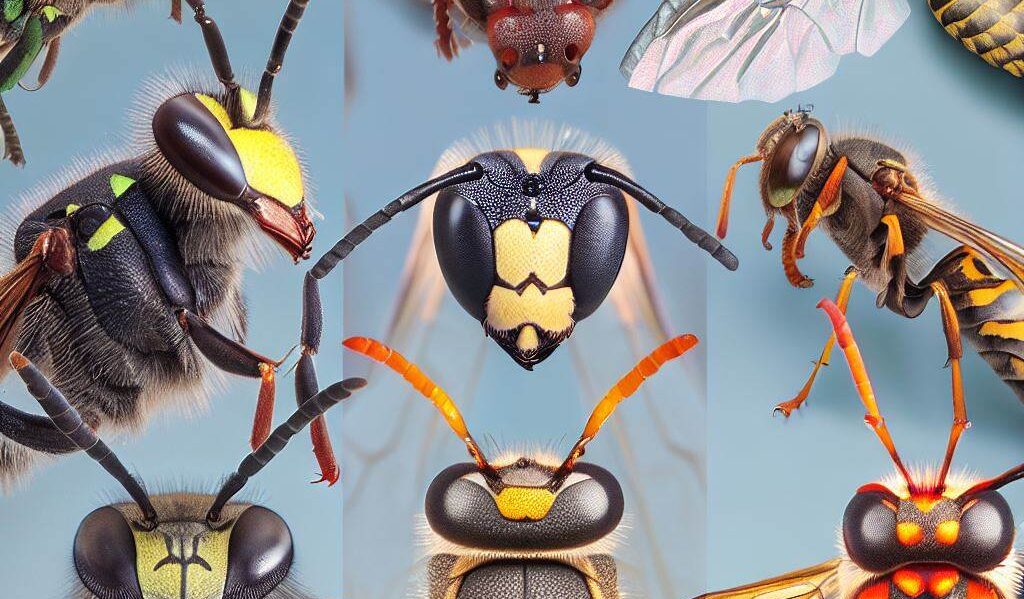Wasps, with their distinct appearance and buzzing presence, are fascinating insects that have both intrigued and intimidated humans for centuries. In this article, we will delve into the diverse world of wasps, exploring different species, nest-building behavior, their habitat preferences, safety tips for dealing with stings, identification methods, effective control strategies, nest removal considerations, and preventive measures to discourage nest building near your home.
Different Species of Wasps
Wasps encompass a vast array of species, each with its unique characteristics. From the familiar yellow jackets and hornets to the lesser-known parasitic wasps and paper wasps, the world of wasps is abundant and diverse. Explore the intriguing features of various wasp species, their appearances, and distinctive traits.
Nest Building Behavior
Wasps are skilled architects, crafting intricate nests using various materials. Learn about the nest-building process, the different types of nests, and the remarkable engineering skills of wasps. From suspended paper nests to underground burrows, understanding their nesting behavior provides insights into their ecological adaptations.
Behavior of Social Wasps
Social wasps, such as yellow jackets and hornets, exhibit complex social structures within their colonies. Discover the roles of the queen, workers, and drones, and unravel the fascinating hierarchy and division of labor within these communities. Gain insights into their foraging behavior, communication methods, and defense mechanisms.
Habitat Preferences
Wasps inhabit diverse environments around the world, adapting to a wide range of habitats. Explore where wasps typically live, from forests and meadows to urban areas. Discover the factors influencing their distribution and the ecological functions they serve within their respective ecosystems.
Dealing with Wasp Stings
Accidental encounters with wasps may result in painful stings. Learn essential steps to take if stung by a wasp, including cleaning the affected area, managing pain and swelling, and identifying potential allergic reactions. Familiarize yourself with when to seek medical assistance and preventive measures to reduce the risk of stings.
Identifying Different Types of Wasps
Distinguishing between various wasp species can be challenging but important for understanding their behavior and potential threats. Discover key characteristics, color patterns, and physical features that can aid in identifying different types of wasps. Unlock the secrets to differentiating between similar-looking species.
Effective Wasp Control Strategies
When wasps become a nuisance around your home, effective control measures are necessary. Explore safe and environmentally friendly methods to control wasp populations. From sealing entry points and removing attractants to utilizing traps and deterrents, discover practical strategies to manage wasps without harming them.
Wasp Nest Removal Considerations
Removing a wasp nest requires caution and expertise. Understand the risks involved in DIY nest removal and the importance of seeking professional assistance when dealing with large or challenging nests. Learn about qualified pest control services that specialize in safe and humane nest removal.
Preventing Nest Building near Your Home
Prevention is key to discouraging wasps from building nests near your house. Discover practical tips to minimize attractants, seal entry points, and create an environment that is less hospitable to nesting wasps. Implementing preventive measures can help maintain a wasp-free zone around your property.
Understanding Wasp Aggression and Safety
Contrary to popular belief, not all wasps are aggressive or dangerous to humans. Gain insights into their behavior and the circumstances that may trigger defensive reactions. Learn how to coexist with wasps safely and foster a greater understanding of these remarkable insects.
Conclusion
By delving into the world of wasps, we can develop a deeper appreciation for their diversity, behavior
and ecological significance. Understanding the different species of wasps, their nest-building behavior, and their habitat preferences allows us to coexist with them in a respectful and safe manner.
In case of a wasp sting, knowing how to properly handle the situation and identify potential allergic reactions is crucial. By taking appropriate measures and seeking medical assistance when necessary, we can minimize the discomfort and risks associated with stings.
Identifying different types of wasps can help us better understand their behavior and potential threats they may pose. This knowledge empowers us to make informed decisions when it comes to managing and controlling wasp populations around our homes.
When it comes to controlling wasps, it’s important to implement effective strategies that prioritize the safety of both humans and these valuable insects. Utilizing safe and environmentally friendly methods, such as sealing entry points and removing attractants, can help manage wasp populations without causing harm.
However, when faced with large or challenging nests, it’s advisable to seek professional help for their removal. Pest control experts have the necessary skills and equipment to handle nest removal safely and humanely.
Preventing nest building near your home involves taking proactive steps to create an environment that is less attractive to wasps. By minimizing potential nesting sites and removing food sources, we can discourage wasps from building their nests in close proximity to our living spaces.
It’s important to note that not all wasps are aggressive or dangerous to humans. By understanding their behavior and respecting their space, we can coexist with these fascinating insects while appreciating the important ecological roles they play.
In conclusion, exploring the world of wasps provides us with valuable insights into their species diversity, nest-building behavior, and habitat preferences. By adopting safety measures, implementing effective control strategies, and promoting preventive actions, we can foster a harmonious relationship with wasps while ensuring the well-being of ourselves and the environment.
